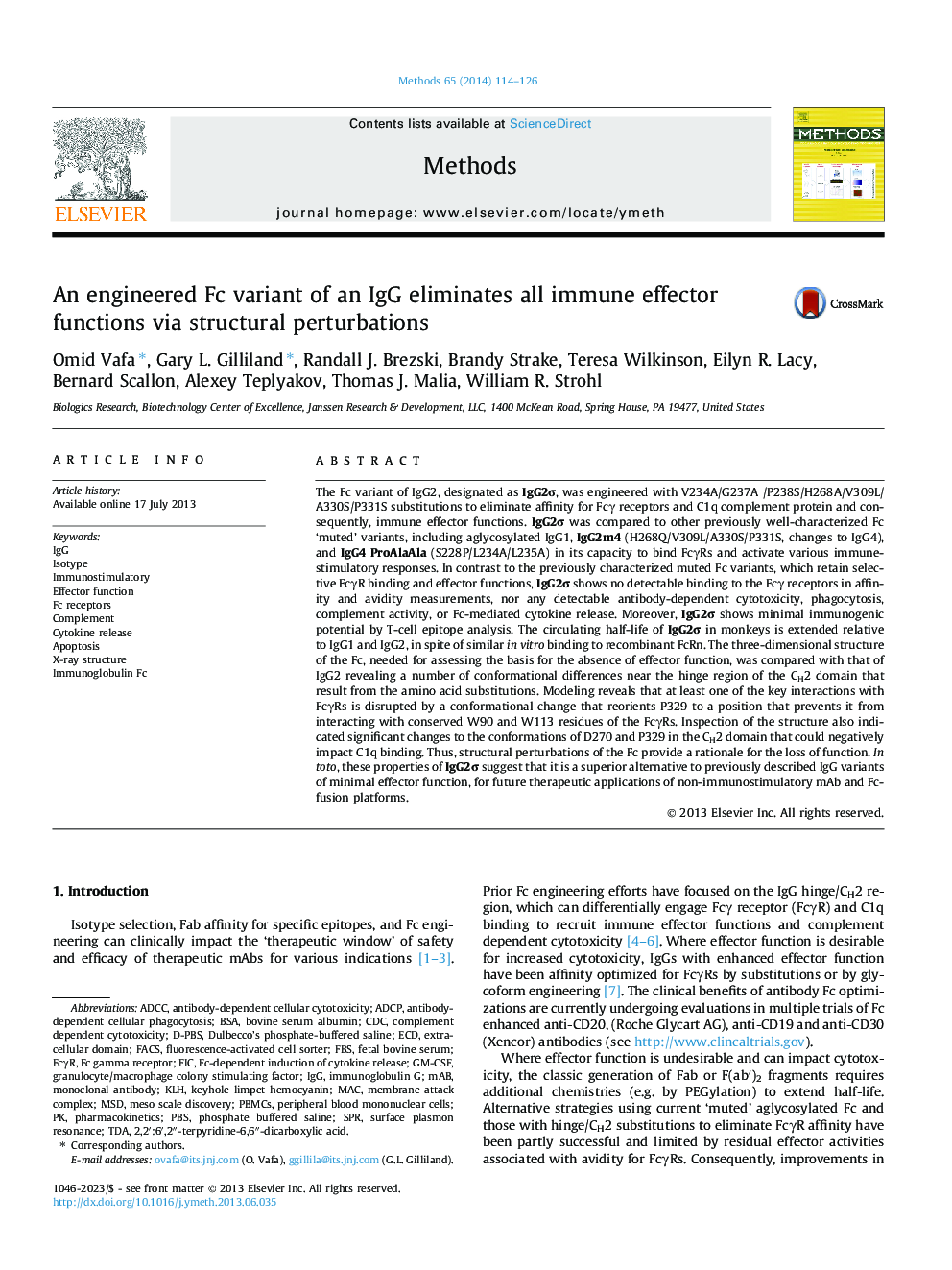| Article ID | Journal | Published Year | Pages | File Type |
|---|---|---|---|---|
| 10825834 | Methods | 2014 | 13 Pages |
Abstract
The Fc variant of IgG2, designated as IgG2Ï, was engineered with V234A/G237A /P238S/H268A/V309L/A330S/P331S substitutions to eliminate affinity for Fcγ receptors and C1q complement protein and consequently, immune effector functions. IgG2Ï was compared to other previously well-characterized Fc 'muted' variants, including aglycosylated IgG1, IgG2m4 (H268Q/V309L/A330S/P331S, changes to IgG4), and IgG4 ProAlaAla (S228P/L234A/L235A) in its capacity to bind FcγRs and activate various immune-stimulatory responses. In contrast to the previously characterized muted Fc variants, which retain selective FcγR binding and effector functions, IgG2Ï shows no detectable binding to the Fcγ receptors in affinity and avidity measurements, nor any detectable antibody-dependent cytotoxicity, phagocytosis, complement activity, or Fc-mediated cytokine release. Moreover, IgG2Ï shows minimal immunogenic potential by T-cell epitope analysis. The circulating half-life of IgG2Ï in monkeys is extended relative to IgG1 and IgG2, in spite of similar in vitro binding to recombinant FcRn. The three-dimensional structure of the Fc, needed for assessing the basis for the absence of effector function, was compared with that of IgG2 revealing a number of conformational differences near the hinge region of the CH2 domain that result from the amino acid substitutions. Modeling reveals that at least one of the key interactions with FcγRs is disrupted by a conformational change that reorients P329 to a position that prevents it from interacting with conserved W90 and W113 residues of the FcγRs. Inspection of the structure also indicated significant changes to the conformations of D270 and P329 in the CH2 domain that could negatively impact C1q binding. Thus, structural perturbations of the Fc provide a rationale for the loss of function. In toto, these properties of IgG2Ï suggest that it is a superior alternative to previously described IgG variants of minimal effector function, for future therapeutic applications of non-immunostimulatory mAb and Fc-fusion platforms.
Keywords
FBSECDKLHADCPFICMSDCDCPBMCsGM-CSFIgGD-PBSmAbFACSFcγRPBSTDAADCCBSAgranulocyte/macrophage colony stimulating factorbovine serum albuminMonoclonal antibodyantibody-dependent cellular phagocytosisantibody-dependent cellular cytotoxicityCytokine releaseIsotypeImmunostimulatoryimmunoglobulin GEffector functionSurface plasmon resonanceSPRApoptosisextracellular domainX-ray structurefetal bovine serumperipheral blood mononuclear cellsPharmacokineticsdulbecco’s phosphate-buffered salinePhosphate buffered salinefluorescence-activated cell sorterComplementMACcomplement dependent cytotoxicitymembrane attack complexMeso Scale Discoverykeyhole limpet hemocyaninFc receptorsFc gamma receptor
Related Topics
Life Sciences
Biochemistry, Genetics and Molecular Biology
Biochemistry
Authors
Omid Vafa, Gary L. Gilliland, Randall J. Brezski, Brandy Strake, Teresa Wilkinson, Eilyn R. Lacy, Bernard Scallon, Alexey Teplyakov, Thomas J. Malia, William R. Strohl,
